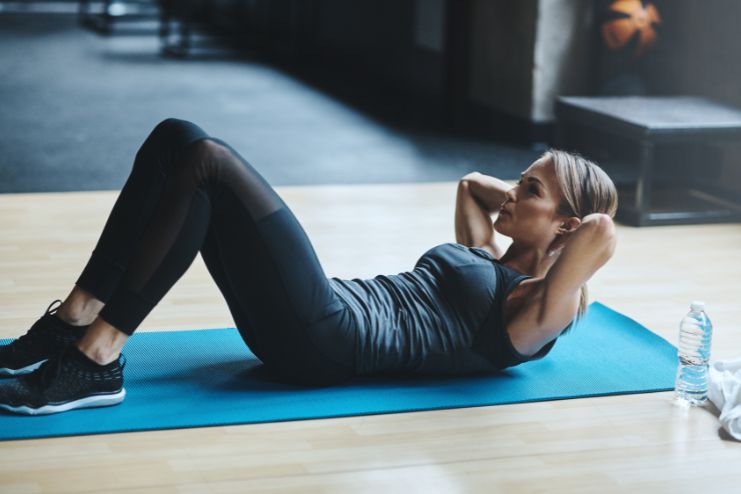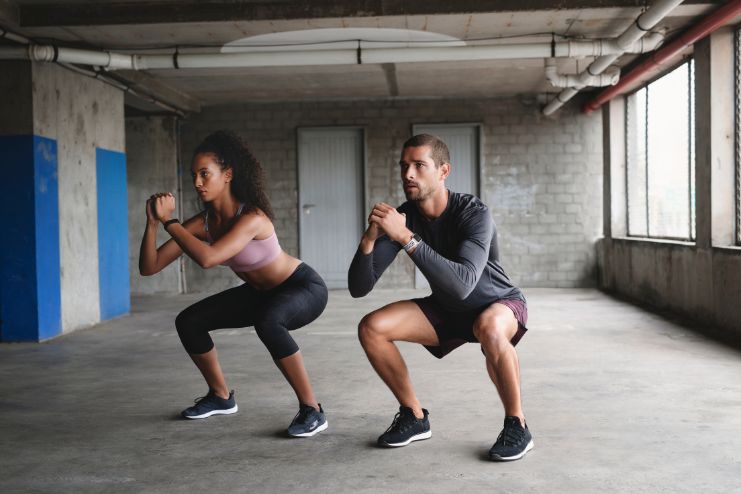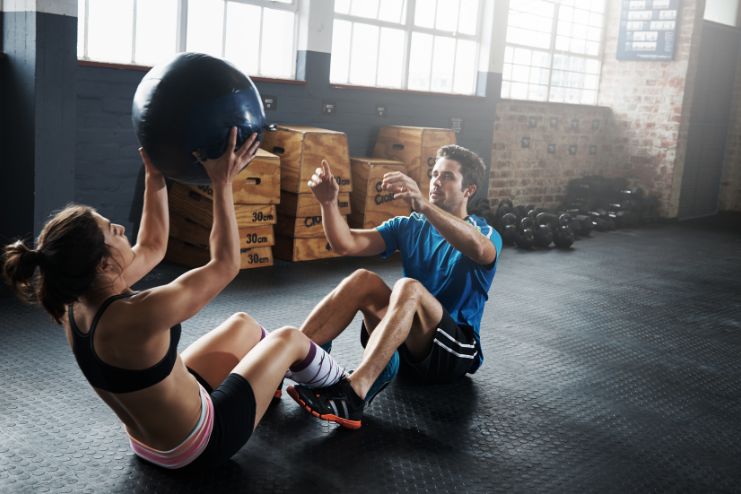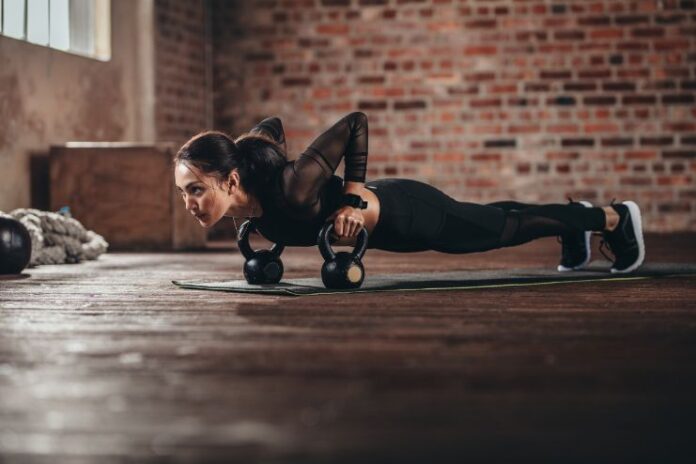Affiliate Disclaimer
Some links in this article are affiliate links. We may earn a small commission if you make a purchase through these links, at no extra cost to you. We only recommend products we find useful to our readersWhen most people think of core training, they usually jump straight to crunches. It’s the go-to move that we’ve all done at some point. But here’s the thing: relying solely on crunches can seriously limit your core development. You end up neglecting some major muscle groups, leaving gaps in your strength and stability. That’s where a “3D core workout” comes in, offering a way to engage all your core muscles and build true strength, stability, and functionality.
In this guide, we’ll explore why crunches alone aren’t enough, what a 3D core workout actually involves, and the real benefits it offers beyond just aesthetics. You’ll learn how training your core in all planes of motion can boost performance, reduce injury risks, and improve posture, giving you a stronger, more functional core.
The Misconception: Crunches Aren’t Enough

Crunches might make you feel the burn, but they only target the surface muscles (mainly the rectus abdominis, aka the “six-pack” muscles). Real core strength, though, involves way more than just these. Your core is made up of a whole team of muscles, including deeper ones like the transverse obliques, as well as muscles in your lower back. Relying only on crunches is like building the front of a house and forgetting the rest. To develop true core strength, you need to train your core from all angles.
What Is a “3D Core” Workout?
A 3D core workout is about engaging your core in all three planes of motion:
- Sagittal plane: forward and backward movements (think crunches or sit-ups).
- Frontal plane: side-to-side movements (like side planks).
- Transverse plane: rotational movements (like Russian twists or woodchoppers).
By training in all three planes, you’re not just working the obvious muscles—you’re also strengthening the deeper ones that stabilize your spine and help with balance. This makes your core functional, meaning it can handle the real-life movements you do every day.
READ MORE: Tuesday Toning: Core-Focused Pilates Session
Why 3D Core Training Matters
The 3D approach isn’t just about sculpting your abs; it’s about creating a solid foundation for your entire body. Whether you’re picking something up off the floor, playing sports, or just maintaining good posture at your desk, your core is involved. A well-rounded core workout does wonders for:
- Athletic performance: A stronger core enhances overall physical efficiency, whether you’re running, lifting, or playing sports.
- Injury prevention: Strengthening the muscles around your spine helps protect your lower back and reduces the risk of injuries.
- Improved posture: A strong core helps you maintain proper alignment, which means less strain on your back and better overall body mechanics.
READ MORE: Monday Motivation: Full-Body Strength Training Routine
Beyond Aesthetics: The Real Benefits
Yes, a defined core looks great, but the benefits go way beyond that. A strong core improves your overall stability and balance, reduces your risk of injury, and makes everyday movements easier and more efficient. So, if you want to take your fitness to the next level, it’s time to move past crunches and embrace the 3D approach. You’ll not only feel stronger but also notice how much better your body performs in day-to-day life.
Let’s explore the 3D approach to fitness so you can plan your sessions with a well-rounded strategy. By understanding how to engage your core from all angles, you’ll be able to build real strength and functionality, setting yourself up for a stronger, more resilient body.
Understanding the 3D Core: More Than Just Abs

Your core isn’t just about your abs—it’s a complex network of muscles working together to support your body. From your spine to your hips, these muscles play a critical role in stability and movement. So, if you want to build a strong, functional core, you need to look beyond crunches and understand the full system.
- Rectus Abdominis (Front Core Muscles): These are your classic “six-pack” muscles, and they help flex your spine. Crunches and sit-ups mainly target these, but they’re just one piece of the puzzle.
- Obliques (Side Core Muscles): The obliques are essential for rotational movements and keeping you stable from side to side, like when you twist or bend sideways.
- Transverse Abdominis (Deep Core Muscles): This muscle is your body’s natural weight belt, wrapping around your midsection to support your spine and improve your posture.
- Erector Spinae & Lower Back: These muscles in your back are key for maintaining good posture and preventing injuries, especially during exercises like deadlifts or daily activities like lifting.
Why Crunches Only Target One Plane of Motion
Crunches are a classic move, but they only work in one direction—forward. Your core, however, operates in multiple planes of motion. To truly strengthen it, you need to train it from every angle.
- Sagittal Plane (Forward and Backward Movements): This is where crunches live, helping you move in a forward motion like bending over or sitting up.
- Frontal Plane (Side-to-Side Movements): Movements like side planks and lateral bends target the muscles that help you move from side to side, adding stability to your body.
- Transverse Plane (Rotational Movements): Twisting exercises like Russian twists or woodchoppers engage your core muscles in a rotational direction, which is super functional for everyday movements.
To get a true “3D core,” you need exercises that hit all these planes, not just the forward and backward ones.
Training the 3D Core: Go Beyond Just “Abs”
Building a strong core isn’t just about targeting your abs with endless crunches. It’s about working all the muscles that make up your core and moving in ways that mimic real-life activities. A well-rounded core workout should focus on stability, balance, and functional strength.
- Mix It Up: Incorporate exercises that engage your entire core, like planks, bridges, and bird dogs. These exercises not only strengthen your abs but also your lower back, obliques, and hips.
- Rotational Movements: Don’t forget exercises that involve twisting, like Russian twists or cable woodchoppers. These will help engage your core in that all-important transverse plane.
- Functional Movements: Think of exercises that mimic everyday tasks, like picking something up or twisting to grab something. These moves will help your core function better in real life, not just in the gym.
By understanding the 3D nature of your core and training it in all directions, you’ll build a stronger, more functional body. You’ll feel the difference not just in your workouts but in everything you do—from sports to everyday tasks. So, let’s move beyond the crunch and embrace the full spectrum of core training!
READ MORE: How to Structure Your Strength Training Program for Optimal Results
The Benefits of a 3D Core Workout

When it comes to core training, focusing on a 3D approach takes things to the next level. By working your muscles in all planes of motion (frontal, sagittal, and transverse), you’re not just aiming for a six-pack—you’re building a core that’s strong, stable, and functional. Whether it’s improving posture, boosting athletic performance, or even just making everyday tasks easier, a 3D core workout offers benefits that go way beyond aesthetics. Let’s break down some of the key perks:
- Improved Core Strength and Stability: A 3D workout targets not just your abs but all the deep muscles around your spine, hips, and pelvis. This leads to greater strength and stability, making your movements more controlled and less prone to injury.
- Enhanced Posture and Balance: With stronger core muscles comes better posture and balance. A stable core helps you stay upright and aligned, reducing the risk of falls or discomfort from slouching.
- Better Athletic Performance: Athletes rely heavily on core strength for power, speed, and agility. By training your core in all directions, you’re building the foundation for improved performance in activities like running, lifting, and sports.
- Reduced Risk of Back Pain: Strengthening your core helps stabilize your spine and support your back muscles, which can significantly reduce the risk of lower back pain and injuries.
- Enhanced Functional Fitness: 3D core exercises mimic movements you do in real life—like bending, twisting, or lifting—which means your body will be better prepared for everyday tasks, making them easier and safer.
- Increased Power and Explosiveness: A solid core is essential for generating power, whether it’s for sprinting, lifting, or jumping. Strengthening your core in all planes improves your overall athletic explosiveness.
- Increased Fat Burn and Core Definition: By engaging more muscles, 3D core workouts burn more calories, helping to reveal a more toned and defined midsection.
Incorporating these exercises into your routine means you’re not just building a stronger core but also creating a more resilient, balanced, and powerful body.
READ MORE: Strength Beyond the Gym: Functional Exercises for Everyday Activities
Key Exercises for a 3D Core Workout
To fully engage your core, it’s essential to work in all three planes of motion: forward and backward (sagittal), side-to-side (frontal), and rotational (transverse). By incorporating exercises from each plane, you’ll build a balanced, functional core that not only looks good but also supports you in daily movements and athletic performance. Here’s a breakdown of the best moves to strengthen your 3D core:
Sagittal Plane (Forward & Back Movements)
These exercises focus on forward and backward motions, hitting the front and back of your core:
- Dead Bugs: A great move for activating deep core muscles while protecting your spine. Keep your movements slow and controlled for maximum benefit.
- Hanging Leg Raises: These hit the lower abs and also engage your grip and shoulders.
- Planks (Front and Variations): The classic plank works your entire core, but don’t shy away from variations like plank reaches or plank jacks for a bigger challenge.
Frontal Plane (Side-to-Side Movements)
Side-to-side movements target your obliques and help improve lateral stability:
- Side Planks & Side Plank Dips: Side planks engage the obliques, and adding dips makes them even more effective for core strength.
- Farmer’s Carry: This is a functional move that builds core stability as you carry weights and resist side-to-side swaying.
- Lateral Woodchoppers: A dynamic exercise that strengthens your obliques while improving power for rotational movements.
Transverse Plane (Rotational Movements)
Rotational exercises are key for building core strength that translates into real-life activities like twisting, throwing, and turning:
- Russian Twists: A favorite for hitting the obliques and improving rotational strength. Add weight for an extra challenge!
- Standing Cable Rotations: This move mimics real-life twisting motions and helps build strength and stability through the core.
- Landmine Twists: Using a barbell, this exercise challenges your core while developing rotational power, which is perfect for athletes.
Anti-Rotation & Stabilization Exercises
These exercises are all about resisting movement, which helps build core stability and control:
- Pallof Press: A simple but powerful move to strengthen your core’s ability to resist rotation.
- Bird Dogs: This classic stability exercise helps engage the deep core muscles while improving balance and control.
- Stability Ball Rollouts: A fantastic move to work your entire core, especially your lower abs, as you resist the pull of the stability ball.
Incorporating these exercises into your routine ensures you’re building strength and stability in all directions, making your core more functional and powerful for daily activities and athletic pursuits.
How to Structure a Balanced Core Workout

To get the most out of your core training, it’s essential to include exercises from all planes of motion—forward, side-to-side, and rotational. This ensures you’re targeting every angle of your core, building strength and stability where it counts. Here’s a sample structure for different fitness levels:
- Beginner: Start with three rounds of dead bugs, side planks, and Pallof presses. These exercises are great for activating the core and building foundational strength without overwhelming your body.
- Intermediate: The combination of hanging leg raises, lateral woodchoppers, and bird dogs introduces dynamic movements and increased core engagement, enhancing both strength and stability.
- Advanced: For a serious challenge, go for five rounds of landmine twists, farmer’s carries, and stability ball rollouts. These moves demand balance, strength, and power, engaging your core from every angle.
The key is balance—incorporating exercises from different planes will give you a comprehensive, functional core workout.
Who Should Do 3D Core Training?
The beauty of 3D core training is that it benefits everyone. Whether you’re an office worker trying to improve posture and prevent back pain or an athlete looking for better performance on the field, a strong core is a must. This type of training can help you move better in your day-to-day life and push your physical limits in sports or fitness activities.
How Often Should You Train Your Core?
The good news is that your core muscles recover quickly, so you can train them frequently. Aim for 3-5 times per week, but listen to your body and don’t overdo it. Balance is key—if you push hard one day, dial back the intensity the next to avoid burnout or injury.
Should You Train Core Separately or Integrate It into Workouts?
You can customize how you train your core. If you like full-body workouts, many compound movements like squats and deadlifts already engage the core. But if you prefer a more focused approach, you can also dedicate specific sessions to core work. It all depends on your goals and how you like to train—either way, your core will get stronger.
By adding core training to your routine, whether on its own or mixed with other exercises, you’ll see improvements in your strength, stability, and overall movement.
Common Core Training Mistakes to Avoid
When it comes to core workouts, it’s easy to fall into some common traps that may hinder progress—or worse, cause injury. Here are a few mistakes to steer clear of:
- Relying too much on crunches: They only target surface muscles.
- Skipping deep core work: Neglecting stabilization exercises weakens your core.
- Bad posture/form: Poor technique can lead to injuries, especially in the lower back.
- Lack of variety: Sticking to the same exercises limits muscle engagement.
- No progressive overload: Not increasing intensity stalls strength gains.
- Neglecting rotational movements: Ignoring rotational exercises limits full core development.
- Overtraining: Too much core work without recovery can lead to strain.
Final Thoughts
In conclusion, a well-rounded 3D core workout goes far beyond the typical crunches we often rely on. By engaging your core muscles in all three planes of motion—sagittal, frontal, and transverse—you can build true functional strength that enhances posture, balance, stability, and athletic performance. Whether you’re a beginner or an advanced athlete, training your core from multiple angles is essential for overall fitness and injury prevention.
A 3D core workout incorporates a variety of exercises like planks, side planks, dead bugs, Russian twists, and Pallof presses, ensuring that every part of your core, from the deep stabilizers to the powerful surface muscles, gets activated. This approach not only helps with aesthetics (yes, the toned abs will come) but also prepares your body for everyday movements like twisting, bending, and lifting, making daily tasks easier and safer.
Just remember to avoid common mistakes like over-relying on crunches, neglecting deep core muscles, or skipping proper form. Balance your intensity and recovery, and don’t forget to incorporate exercises from each movement plane to get the most out of your routine.
So, embrace the 3D approach to core training, and get ready for a stronger, more stable, and functional body!
References
- https://www.freeletics.com/en/blog/posts/3-dimensional-training/
- https://archive.t-nation.com/training/3d-core-training/
- https://www.pwcva.gov/news/understanding-your-core-more-just-abs
- https://www.healthline.com/health/core-strength-more-important-than-muscular-arms
- https://fitness4backpain.com/top-core-exercise-mistakes-to-avoid-for-a-stronger-and-safer-workout/
- https://youtu.be/8P559qyrRyY?si=Q9pSRn32nLPpBNEy
- https://youtu.be/igocrgAO_Og?si=1rpG-UzAdhJPWFYa
In this Article




















